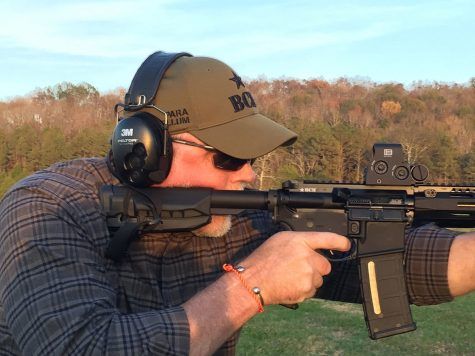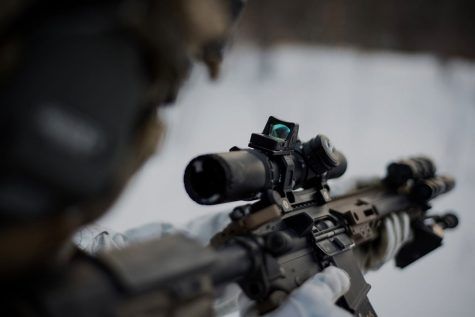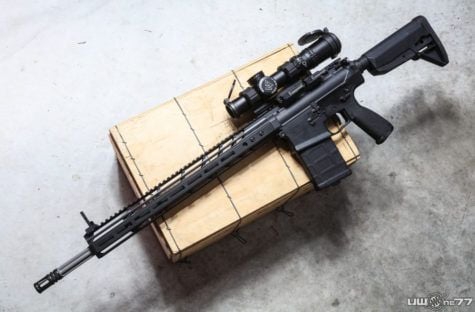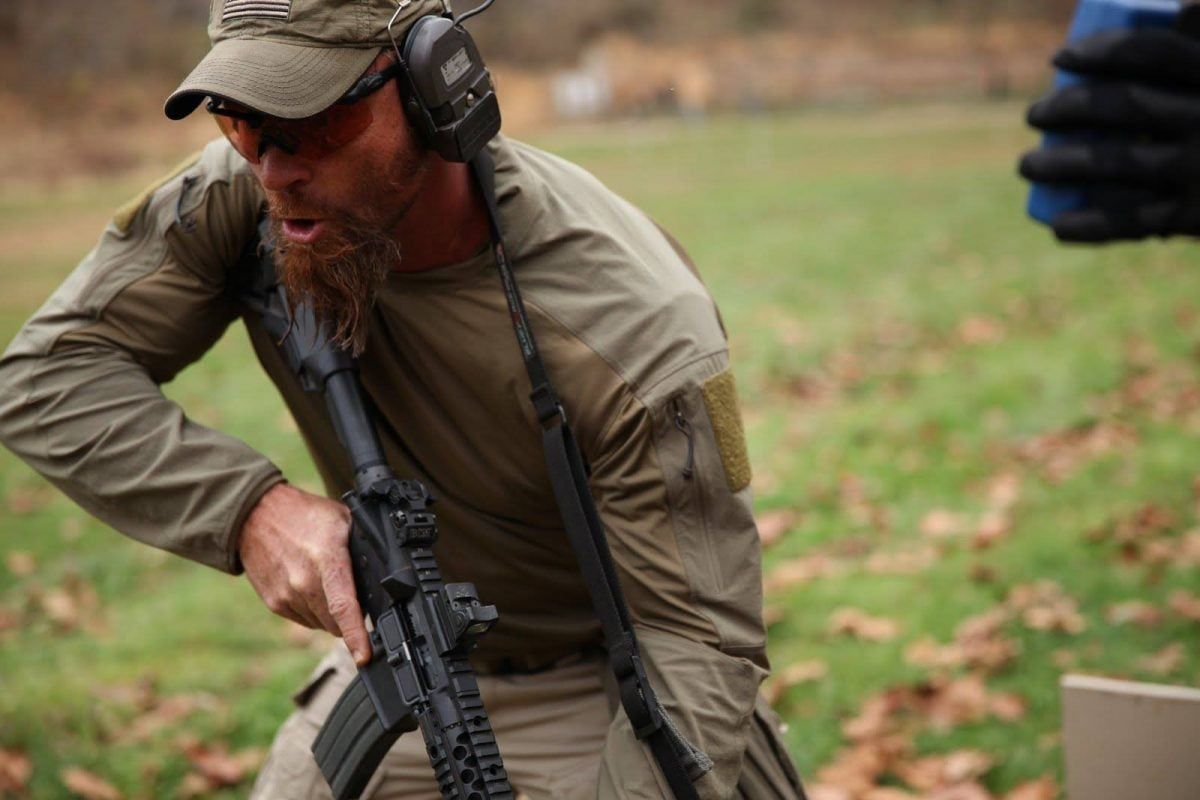
We recently touched base with special ops veteran, author, and world renowned trainer Pat McNamara of TMACS Inc to discuss his philosophy on training, what makes for the ideal fighting rifle, and his views on the AR-15.
Q: Pat, can you talk about your background and how it led you into training?
Pat McNamara: I’m a retired military guy. I did 22 years and it was all Army special ops time. My last 13 years were in Delta. I retired in ‘05, and I’ve been doing my training thing ever since. I started flying under my own banner in 2010… under the TMACS banner.
I like to say I have a vested interest doing what I’m doing on a couple of different fronts. Number one, I train a lot of law enforcement. At the risk of sounding like I am blowing smoke up their ass, I respect the world in which they live. It’s a world riddled with ambiguity where they have to be masters of adaptability. They’re damned if they do and damned if they don’t. They are in constant fear of litigation, liability and there’s a freakin’ lawsuit attached to every round they fire.
And for civilians, it’s our duty to protect and serve as well…to protect ourselves and our loved ones and serve our communities as responsible, trained gun handlers…My vested interest there is I would rather have assets than liabilities. There are a lot of gun owners out there, but just because you have a gun does not mean that you’re armed.
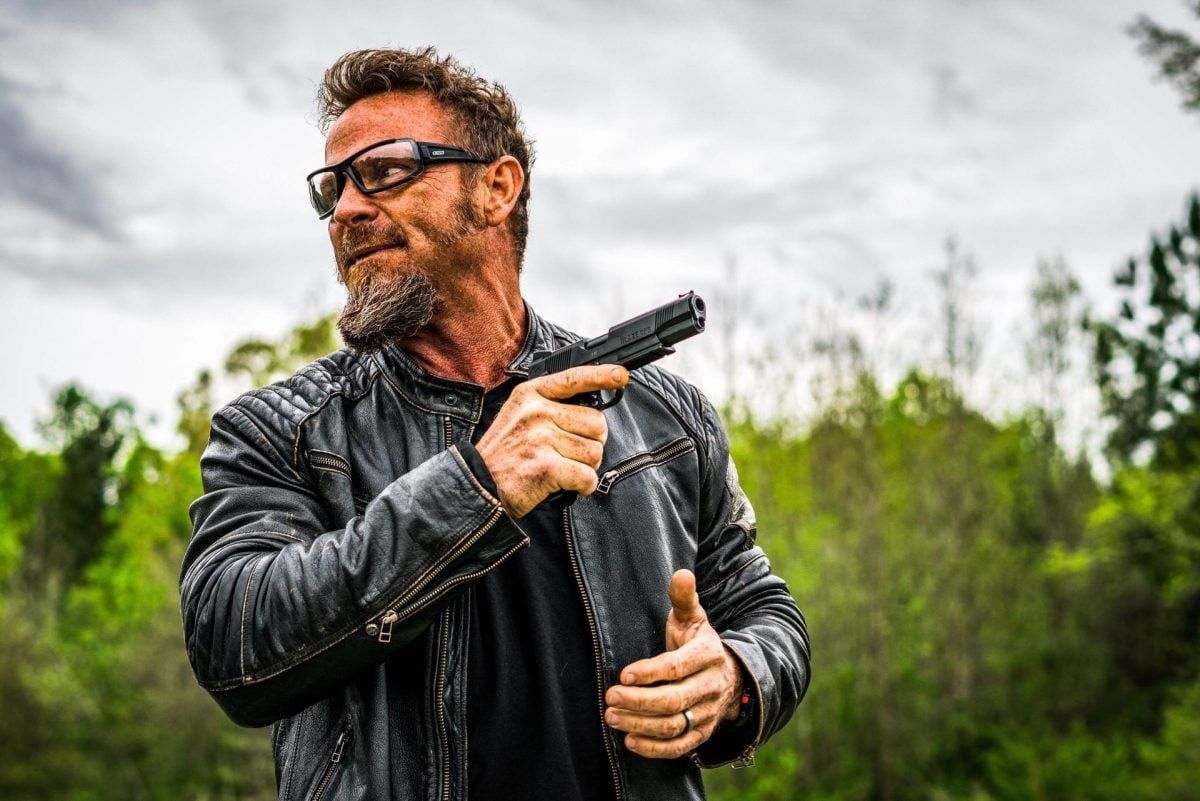
Q: Can you elaborate a bit on that?
Pat McNamara: Well, we have to be our own first responders. We cannot rely on law enforcement, fire, EMS to be there at a moment’s notice. We need to be trained, and we need to be able to take care of our families, our loved ones and ourselves…in first aid, in basic survival and in protecting ourselves. Now, that can be via conflict resolution, going fist-to-cuffs, or by being lethal.
There’s a lot of people that have the hardware that don’t have the software to go with it. I don’t care how many guns you have, it doesn’t mean you’re armed…It’s hard to shoot a pistol or rifle accurately, especially at a moving target under stress, during periods of limited visibility etc. So having the hardware is a very minute component to personal protection. You have to have the software to go with it.
Q: I know your training courses put an emphasis on movement. Can you talk about that?
Pat McNamara: Most of us train with a flat range mindset where we’re facing the target and we’re putting rounds on a target…a lot of times it’s up close, within 3 yards. That’s baffling to me. I call it “ballistic masturbation.” Guys are just spraying and praying. They’re up close and they’re just…you can hear those dollars and cents just spitting out of their rifles and pistols.
To me, fighting is fighting. Whether it’s with your fist, feet or with your gun. There is going to be movement. There’s going to be kinetics. I think one of the major things that’s neglected on the range is proprioception…awareness of your body. More distally, kinesthetic awareness…an awareness of your feet under your body.
Movement on the Range
We’ve got to implement and incorporate movement on the range. And I don’t mean you have to do a bunch of sprints. I’m just talking about maybe two or three feet laterally, oblique, to the rear…that kind of thing.
We also have to exercise visual acuity. Guys will run backwards but they never take a snapshot behind them because they are living in flat range world. They know that it’s a flat range and there is nothing behind them. Now, try that in a Wal-Mart parking lot at 10 PM…
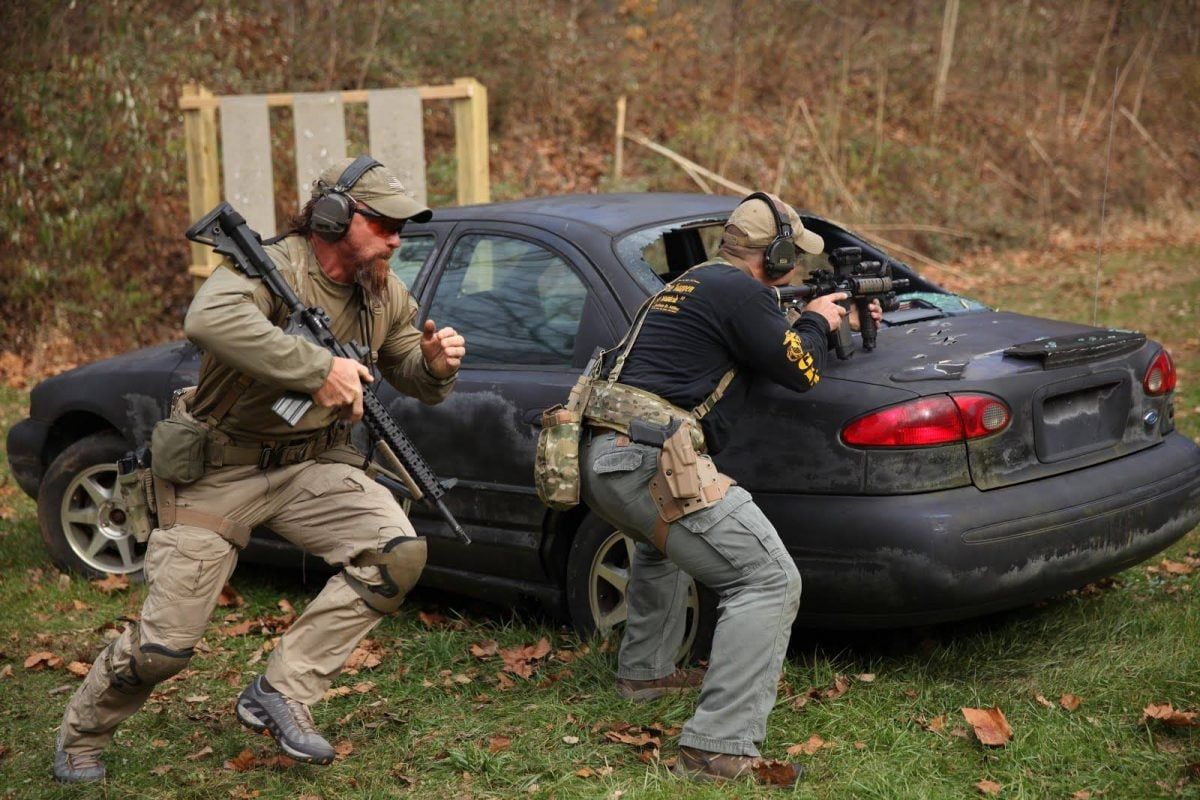
Q: Many times there is not an ability to incorporate movement due to range rules, or lack of access to an area where these things can be done safely. What would be your advice to those in that position?
Pat McNamara: You can always do dry fire drills. Just ask yourself, “What makes sense? If a fight happens and it’s a gun fight…am I going to be stationary?”
Now, stationary practice is good. Proper bullet placement, at the end of the day, is all that really matters. But you have to remind yourself…whether you are drawing on somebody or if you’re seeking cover, that’s movement.
Movement after the draw
Even after a draw stroke, what happens then? Let’s say it’s a lethal encounter. What are you going to do after you fire? You’re going to move…because now you have to close in on that assailant. Now you have to make sure the gun is cleared from him. You have to clear your six o’clock. You have to check his vitals to see if you need to render medical aid in case you didn’t strike that killing blow.
I just think it’s super neglected and it can be done. If ranges don’t permit, you can do it dry-fire. You can set up little cones, little obstacles and step over things and you can do it in your house.
Q: I know a few guys who have taken your courses. Each described the experience as being a positive one where you were like a coach to them…can you talk about your teaching philosophy?
Pat McNamara: When it comes to teaching, too many are too eager to say too much. It becomes a bunch of watered down, esoteric minutia and it’s no longer palatable to the intended recipient. I’m a big fan of brevity. I like to say, “the clarity by which something is defined will determine the effectiveness of its application.”
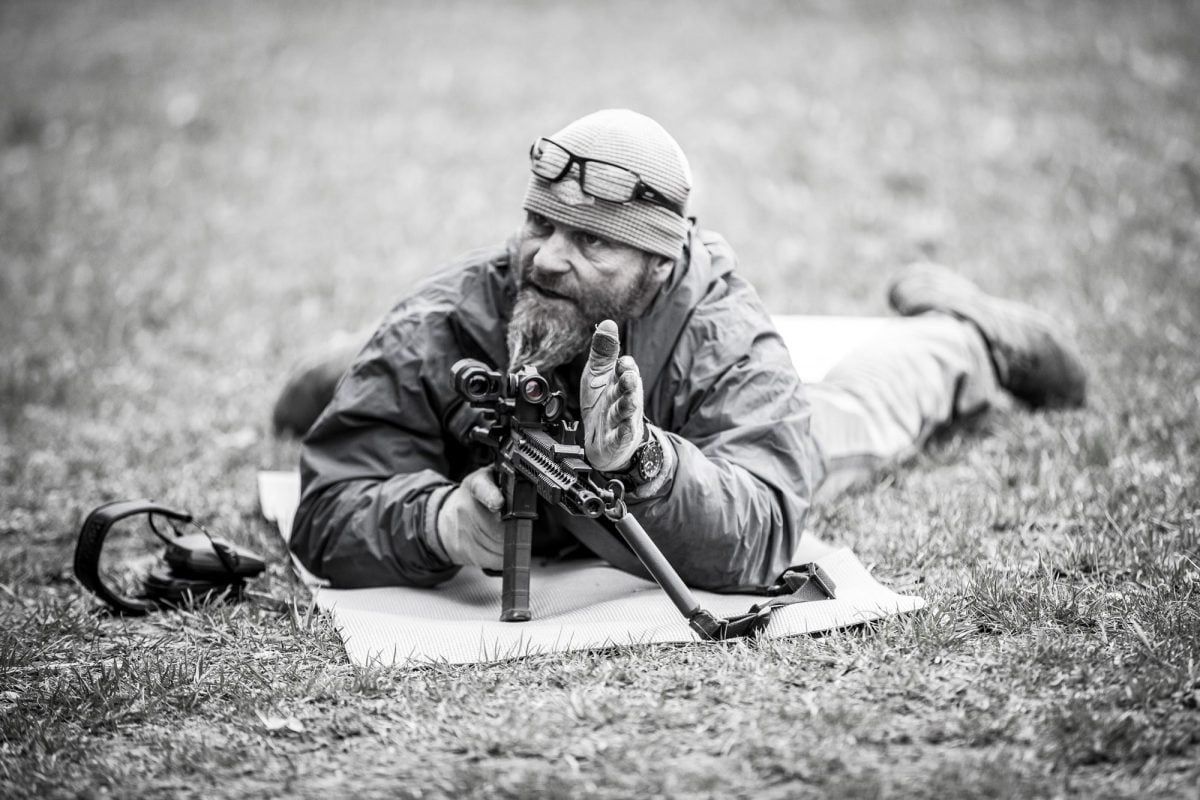
Pat McNamara: Being the Right Person at the Right Time
You’ve got to be the right person who is going to say the right thing to the right person at the right time. It’s not only important to know what to say, but know what not to say. If we’re inundated, our brains don’t work. Our brains work in ten-minute chunks. I believe we are not capable of learning in lecture format. It just doesn’t work for our primal brains. So, I am very careful about approach when it comes to verbiage.
The other thing is, I like to give guys a lot of what I call “discovery learning.” So, I explain the task in detail, demonstrate the task, and then allow them time at their own pace to work through that drill.
Pat McNamara: Performance Based Training
I don’t put any time limits on people and stuff like that because I run
Performance based training asks “How well? Where is my home and how can I make incremental improvements to the structure of my home?”
Group Critique for Better Learning
I am also a big fan of group critique. I give a demonstration, and there is
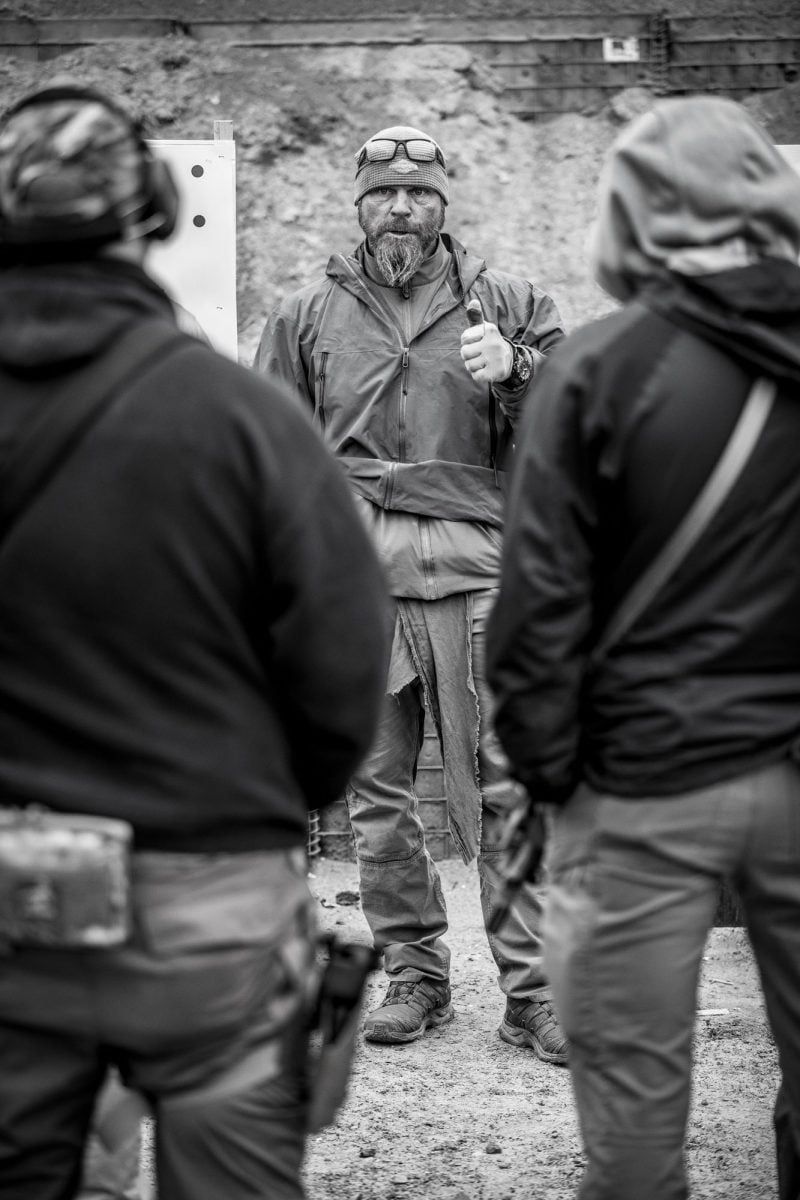
Pat McNamara: Avoiding Spoon-Feeding
They did it versus spoon-feeding. If I am spoon-feeding them, I am putting them on an entitlement program. I am putting them on welfare. They will say to themselves, “Well, I got a free check last month for doing nothing…I should get a free check this month for doing nothing.”
So, it’s a better learning environment when it’s taught that way, in my opinion. And that’s how we learn at a primal level. Vicarious learning…aping, mimicking and then self-critique. So that’s my approach. I’m coaching versus being a cadre on a podium barking out orders.
Q: In the past I’ve heard you mention that a lot of us are training too close to our targets. Can you talk about that?
Pat McNamara: The closest I work at the range is 7 yards. That’s for the initial drills I do with a pistol. I do a little bit of rifle mechanics at 7 yards. Nothing is closer than that. Even with pistol, we work all the way to 50 yards…don’t get your head wrapped around this notion that all gunfights happen within a certain foot marking. I mean, I think a lot of those statements are bullshit…but a lot of guys will practice at that range because of those statistics.
97 vs. 3
So, should we train for that 97 percent, or should we train for that 3 percent? I’m going to train for the 3. Because I know my 97 is good. 3? That’s a different ball of wax. And that’s for fight training, driving, medical, shooting, physical…whatever. I’m going to train for the 3, not the 97. P
Another thing I work on is accuracy and bullseye shooting. (laughing) I read an article where guys were saying that bullseye training was dangerous and you’re going to get yourself killed, because you don’t want one shot on top of another. You want displacement on a human with the shots because you can do more damage (laughing.) Oh my God, there’s some kooky shit out there. (laughing)
Q: Are there other misconceptions or mistakes you see being made by folks that may be new to your courses?
Pat McNamara: Occasionally, I do have to unfuck people because theatrics are so ingrained into their hard drive that they are convinced that they make sense. Because somebody told them that it makes sense and they believed them and they got total buy-in. I ask “well why are you doing that?” They explain it to me and I ask “well would it really happen that way?” For instance, shooting a couple of rounds, then snapping the gun back, and then whipping your head from left to right…like scan and assess.
“Would you ever do that in a gun fight?”
I say, “would you ever do that in a gun fight?” No…you would close that gap on that guy. You wouldn’t snap your head from left to right and put the gun back in the holster. What you would do is close the gap, make sure the gun is free from that individual, then like I said before, you might have to render aid.
Another is following the target to the ground. You never, ever do that. He’s not going to fall, slow motion in a straight line. He’s not going to do that. Check your work through your sights. The target’s still standing there, so just get ready for that next shot.
“How do we run with the rifle?”
Another one…and I ask this before running drills…I’ll say: “How do we run with the rifle?” They’ll come up with all these different things. I say: “Hey guys, the answer is this: “Run the same way you would run without it. It’s the same way. You’re not going to put it up in the air or do any hokey-pokey bullshit with it. You’re going to run with it like it’s the most natural way for you to run.”
“They realize it’s dumber than hell”
The list goes on…but if it makes sense to them, I always tell them “knock your socks off, as long as you’re not a danger to anybody else. If that makes sense to you, then rock on. I don’t agree with it, but if it’s what you fell in love with and it makes sense with you, then go ahead.” And usually by the end of a
Q : I’d imagine these realizations also happen in regards to gear they may be running on their rifles?
Pat McNamara: Certainly…the same goes for guns and gear. There’s a lot of gimmicks, gizmos and gadgets out there. I’m a big meat and potatoes guy. I have very few gadgets on my rifle. If it’s a battlefield multiplier, then absolutely…I’m going to put it on. But there’s very few of those. I don’t need a lot of crap on there.
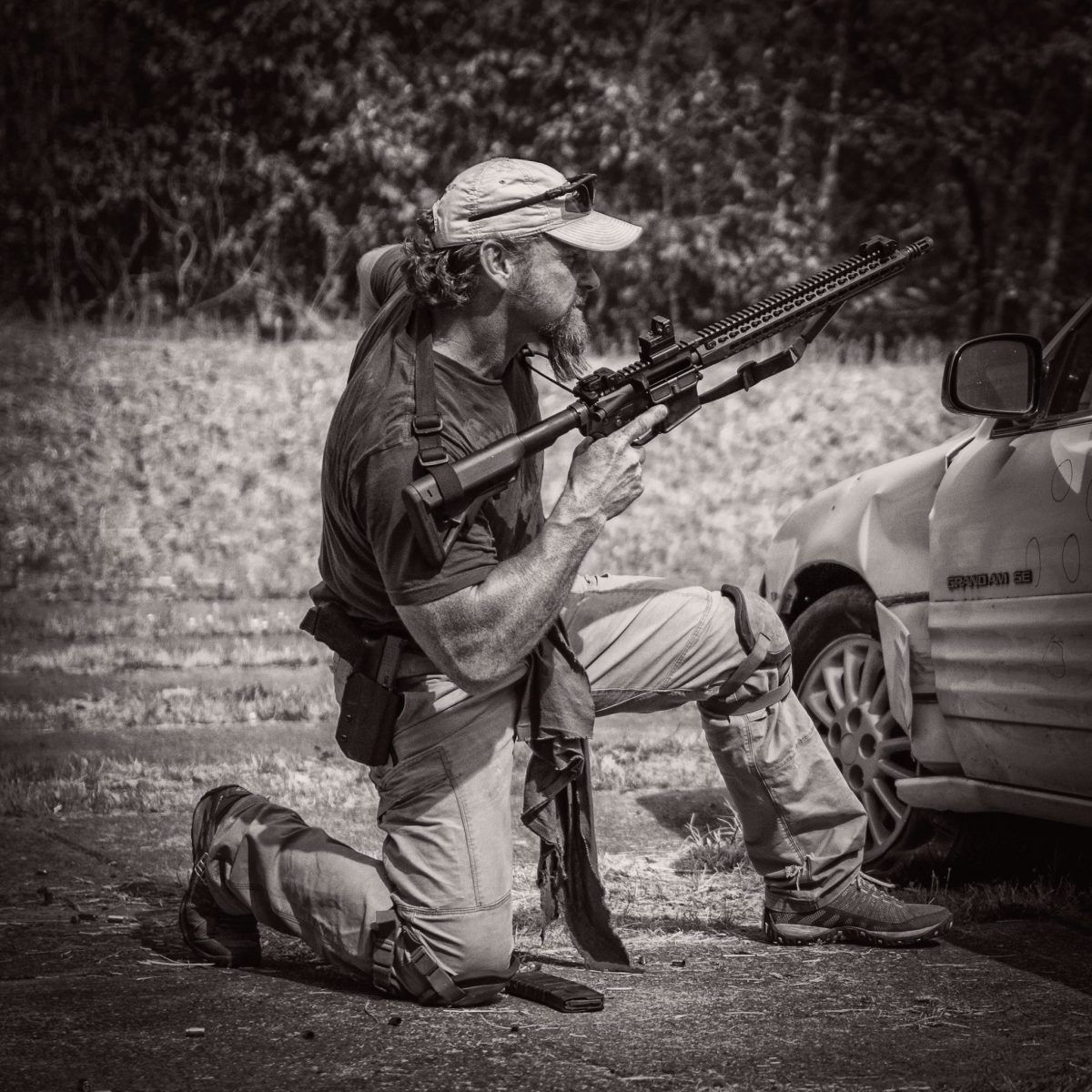
I need to know how to how to put my sight on correctly. And, I need to know how to zero that thing correctly. I need to know roughly how many rounds I have through that barrel…the lifespan of that rifle. I need to know certain things about it. What I don’t need to do is throw a bunch of gizmos on it. It’s not going to help me perform any better.
Q: Can you talk a bit about what sort of rifle you prefer today, and why?
Pat McNamara: I like a full length AR-15…either a 14.5″ or a 16”. Now, a big portion of that is distance. I like distance. Now a lot of guys, they’re only at 50 yards, as that’s the max they can get at their local range. But, the further you go out with your zero, the better. It’s a very, very good feeling to know you have a zeroed rifle and that you know how to zero it correctly.
For instance, I like a 50/200 yard zero. I love knowing I can reach out substantially even just with a 3x multiplier and put rounds on target at 300. I’m not going to be able to do with a 3x at 400 consistently, but 300? All day long…
Q: You talked earlier about gimmicks and gadgets. What would you consider the essentials on your rifles?
Pat McNamara: All my rifles are outfitted pretty much the same. I’m a big fan of a two-stage trigger because I think it’s a battlefield multiplier. I don’t like any 3-gun, superlight stuff, but I do like to put a Geissele SSA trigger in there, or a trigger from a good manufacturer.
Good manufacturers don’t have jailhouse tattoos as logos…so, overall, I look for a good manufacturer that makes a good gun and has good customer service. You don’t need a Frankenstein gun. There’s a lot of good gun companies out there that make upper and lowers that are really good quality.
Pat McNamara: Sling Recommendation
Another essential is a sling. I like a two-point sling versus anything else because I can use it to help stabilize my shooting platform and I can sling that rifle, and it will be close to my body on my back.
Pat McNamara: Optic Recommendation
With an optic, it’s very personal. I will say that a lot of guys don’t even realize that they don’t have a round dot on their optic until they train with me and they’re at 100 yards shooting at a target and they realize their dot is shaped like a bowling pin or a crescent moon. I love my T2 Aimpoint because it’s a round dot. Even with a 3x multiplier, at 100 yards that dot is still round…it’s crisp. There’s no bursting or pixilation or anything like that. It’s a nice clear round dot.
Pat McNamara: Light Recommendation
As for light…think about why you have that AR in the first place. If it’s for protection, you’re going to need that light because more than likely, you’re going to fight in adverse conditions.
Now, I don’t want to cast myself as calling the kettle black, but a lot of times on the range, I don’t run my light…just because of wear and tear. It’s there in my gun box and I’ll click it on after training. But if it’s daytime, I’ll usually take my light off during training because I don’t need 500 rounds of carbon blowing back on it and me having to clean that or worry about it’s life…but you have to have that carbine light. Because more than likely, we’re going to be fighting in periods of limited visibility.
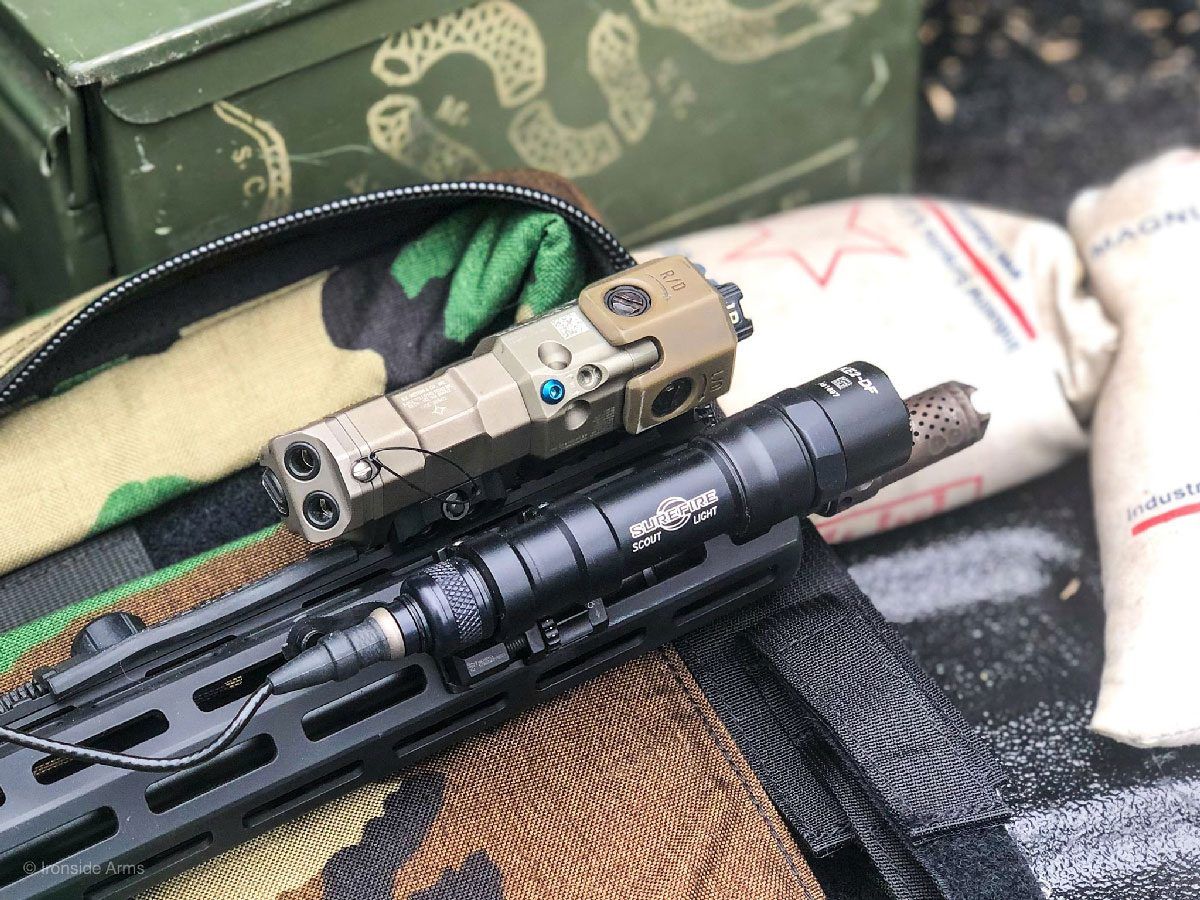
Now everyone asks, which side the light should be on? It’s a personal preference, right? Mine’s at 3 o’clock, but that’s where my hand falls naturally without having a light ND. It’s right there when I need it. My strong side is all free and clear for barricade use and stuff like that.
Q: So let’s say we have all of the essentials. Any common mistakes you see that we should be aware of when we’re setting up our guns?
Pat McNamara: A lot of times guys have their optics on wrong. They’re too far back. You need at least an inch and a half of eye relief from your cheek stock weld…There’s too many times where guy’s sights take up a lot of real estate and they are back by the charging handle. If they fall backwards, that’s going to wack them in the eyeball if they are holding the rifle correctly.
Along with holding the rifle correctly, you’ve got to use that stock extended fully. Too many guys will collapse it, and it’s not necessary. Extend that thing fully and use the entire length of that carbine.
Pat McNamara: Importance of Good Iron Sights
Another thing…good iron sights are important. Invest in good metal ones versus plastic ones. Because if you run a battery powered optic, you have got to be able to flip those suckers up with impunity and fire with impunity. And then remember to zero those backup irons as well.
Remember…if you are just running a holographic site…you are relying on a battery. On a battery! You cannot do that. Backup irons have been working for several hundred years and they work well.
That’s one of the things I see at the range…A guy will show up without backup irons. I’m like “dude, get yourself a pair.” Sometimes I’ll give them an old set, but you’ve got to have those things if you’re running a battery powered optic.
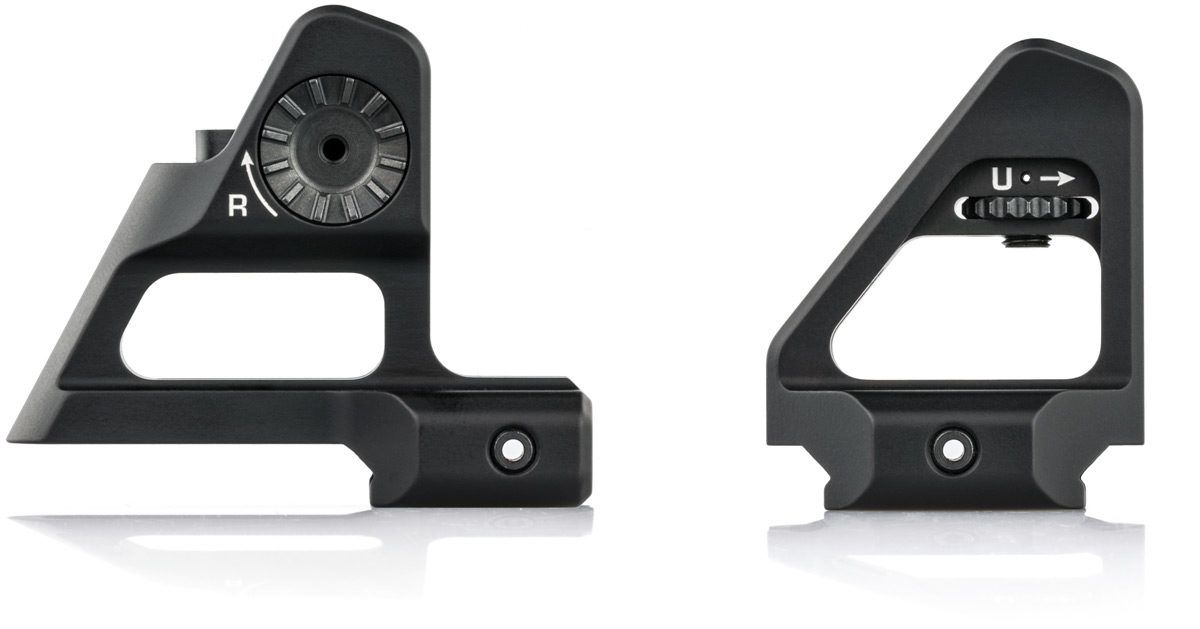
Q: In closing, what are your overall feelings on the AR as it stands today?
Pat McNamara: I often ponder where will it go. I’m in love with the platform. Someone could offer me whatever crazy-ass new fangled gun that is out there…I’m going to stick with my AR. They’re ergonomically correct, reliable and they’ve stood the test of time. They’ve been challenged, debated over, modified.
An Intuitive Platform
The other thing is it’s an intuitive platform. It’s very easy to teach somebody. I just taught an actress. I did a 5-day shooting course with her. She didn’t even know how to put bullets in a magazine. Nothing. She had never held one. And on the third day I had her shooting from behind cover, changing magazines, doing reloads when she wanted to versus when she had to….doing immediate action drills. This was an actress and a model. The thing is if you have a little bit of smarts and you rely on your intuition, it’s a very easy platform to learn. She was blown away with how easy it was.
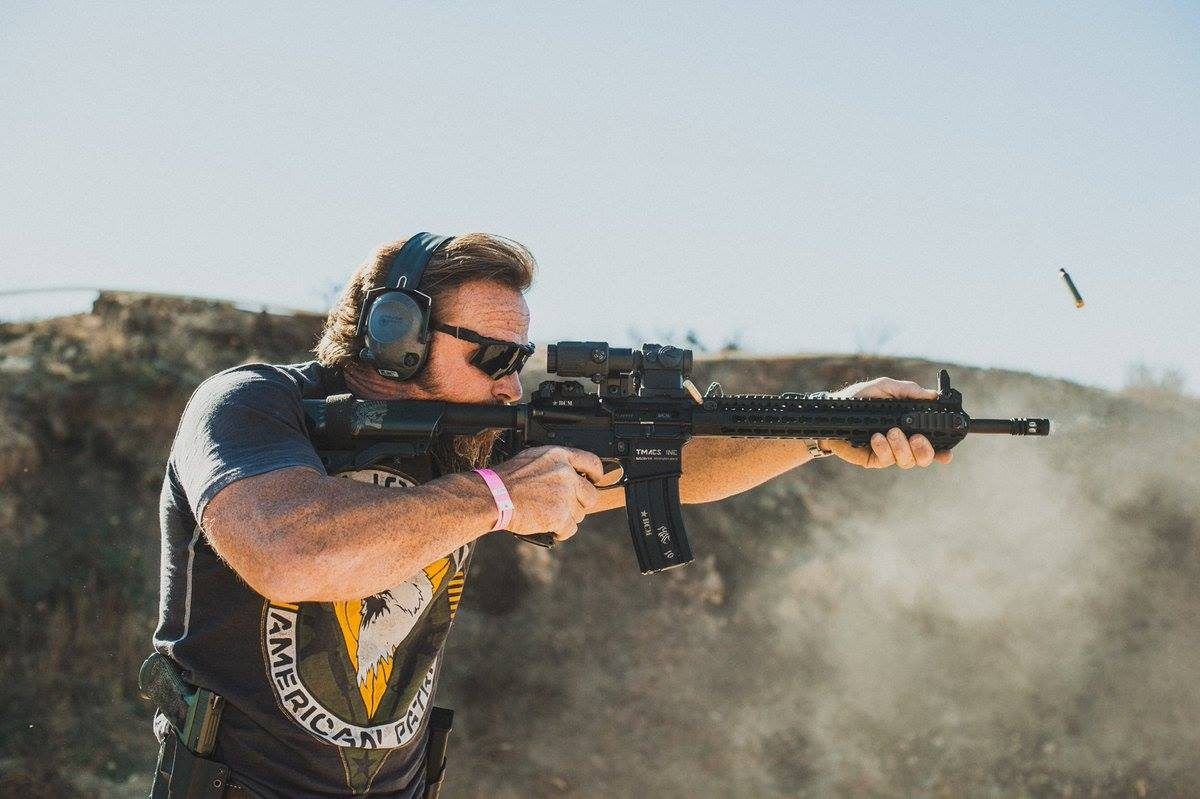
Pat McNamara: Not Messing Up a Good thing
I like where they have come…where they are lower profile…where they are thinner, where they are lighter, and where they are stronger. There’s a better life cycle…but there is a lot of bolt-on crap too.
I just say buyer beware with a lot of that stuff. It’s better to have it streamlined and have just the minimal necessary stuff on there than it is to pack on a bunch of crap. Because now it isn’t light. Now it’s not going to run the same way. Guys will run into malfunctions and stuff because they have all these levers and buttons and crap on it, and it just messes up the function, but yeah, I am in love with the platform.
###
Thanks to Pat McNamara for taking time to sit down with us. For more about Pat, including his training schedule, visit his website at www.tmacsinc.com.
2 - 2Shares
